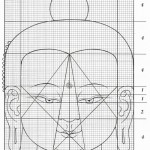Therapeutic vs. Meditative

I find that out of those that come across the concept of meditative or spiritual practices, it is therapist that have the hardest time grasping the concept and really understanding the ultimate difference between a therapy and a spiritual practice.
For Therapists
Spiritual practices, such as Sitting Meditation, Meditative Walks, and of course Meditative Art (the focus of this website), are all practices that are nothing new or modern. These practices are ancient and have been an integral part of not only religions, but all spiritual life across the globe. They are simply a natural extension, of a practitioner’s intention, of their inner work, into their day-to-day life. The different meditative practices are a way to utilize one’s activities to help maintain the inner states as well as to stabilize a meditative inner state. This work is absolutely crucial. It is not only needed but also simply natural for a dedicated practitioner.
Like a person learning to drive, they must take that which they have learned and practiced in the safe parking place, into the road. As important as the parking lot is at the start, staying in the parking lot will certainly not make anyone into a proper driver.
Coming back to the therapeutic world, and its connection with spiritual work.
It might be clearer for a common therapist nowadays to relate to and understand some spiritual practices that they personally are more closely familiar with. Such as: prayer, worship ceremonies or chanting.
Prayer, for example
Let us try, with a rather particular example to make this point even more clear: No-one, can really object to defining a Prayer as a spiritual practice. While it is very clear that it can have a therapeutic and healing effect on anyone that prayers, we do see it as a completely separated world then the world of therapeutic work.
Why? What is it, that makes Pr ayer so distinct from Therapy that no confusion and no mixing between the two worlds arises? When talking about Prayer, I refer here to real living prayer, not to a readymade text written by someone else, that we automatically recite, but a state of inner communication that is alive.
ayer so distinct from Therapy that no confusion and no mixing between the two worlds arises? When talking about Prayer, I refer here to real living prayer, not to a readymade text written by someone else, that we automatically recite, but a state of inner communication that is alive.
Perhaps, it is that prayer is respected as a deep, intimate and personal act of self-communication. A prayer is as intimate as most people have ever come to themselves, and in that depth they find comfort that is their very own. That comfort, that inner home, where we are always welcomed, cared for, and nourished, that space of love is our very own. And, furthermore, it is not in apposition to anything else; there, we are not more healthy, or more rich, or more successful. We are however more real and we can hopefully feel that.
A therapist, would probably see the benefits of such a real prayer as meaningful and valuable. Connecting one within. And yet, although there are clear therapeutic benefits we can see that prayer is not a therapy.
While helpful the prayer, it does not put that help as an intention, as a goal. The person in prayer is not aiming in healing themselves but in connecting, in discovering, and coming home. Therapy is always seen in relation, in contrast: it is a state of helping, in contrast to, a state that needs help. Just as health is always judged in relation to sickness, richness as appose to poverty.
Inner work on the other hand don’t speak in this terminology. It is not of this world. It has greater goals and heights to reach, depth to master. The only achievements made is within one’s own path, there is no social norms or health standard to be measured with.

A point of view beyond therapeutic benefits
There are so much modern day talk about therapeutic benefits of meditation and meditative practices. And while there are advantages in this modern approach, somewhere along the way it seems that the “essence” of it has been mixed with the “side effect”.
We have all read articles on: “How meditation can make you a better lover / business partner / patent / artiest / teacher…. And while this is all fine and dandy these are to be recognized as byproducts of meditative work.
The real benefit is our inner growth, how we experience ourselves and how much inner depth we have accessible to us.
And please don’t get me wrong, I think that anyone that wishes to make use of a meditative practice for therapeutic purposes is great. Let us all be a bit calmer and patience. Amen. We can all use that all around the world – as parents, as partners, as driver on the road, in the office, in politics. It’s wonderful that people can find such practices helpful, relaxing and supporting. Nothing wrong with that. But let us be clear and not get confused!
Therapy is not a goal of meditation. It can be used for it, but that is not what is created for. Mediation and the inner path put before them the heights and greatest of goals of human transformation, evolution and internal perfection.
A real spiritual practitioner is focused on their inner work, their inner goals, for them there is nothing but The Path. Therapy, as important and beneficial as it can be, is simply limited. And I sincerely do not mean this in any patronizing way. Therapy, at its finest, can hope to allow one to create the important and needed base ground of wellness. And that healthy base is an absolutely necessity, to start walking the real inner path.
 Where we are and where are we heading
Where we are and where are we heading
If you are sick or bleeding, naturally, you must get first aid help fast, and take care of your physical needs, before attempting to move on into finer care.
Taking care of emotional traumas, physical illnesses, mental and personality disorders all need to be done of with the greatest urgency and seriousness. It is only after we reach a relatively balanced personal state that we can proceed to forward and dive into real inner work.








